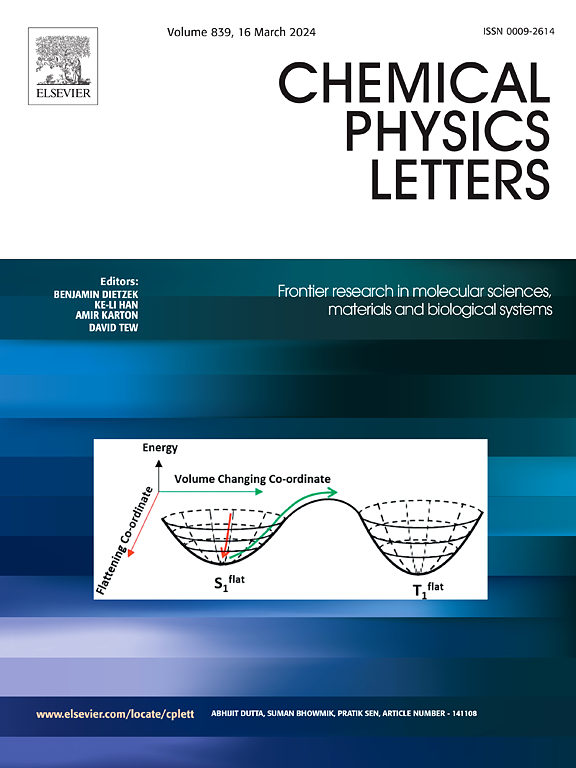Extension of the CC(P;Q) formalism to the electron attachment and ionization potential equation-of-motion coupled-cluster frameworks
IF 3.1
3区 化学
Q3 CHEMISTRY, PHYSICAL
引用次数: 0
Abstract
We combine the electron attachment (EA) and ionization potential (IP) equation-of-motion (EOM) coupled-cluster (CC) approaches with the CC(;) formalism. The resulting methodologies are used to describe the electronic states of several open-shell molecules, with the goal of approximating high-level EA/IP-EOMCC energetics corresponding to a full treatment of 3-particle–2-hole (3-2) and 3-hole–2-particle (3-2) excitations on top of CC with singles and doubles (CCSD). We show that the active-orbital-based EA/IP-EOMCC CC(;) approaches, abbreviated as EA/IP-CC(t;3), achieve sub-millihartree accuracies relative to the parent EA-EOMCCSD(3-2)/IP-EOMCCSD(3-2) data using reduced computational effort, while improving upon their completely renormalized EA/IP-CR-EOMCC(2,3) counterparts.

CC(P;Q)形式在电子附着和电离势运动方程-簇耦合框架中的推广
我们将电子附着(EA)和电离势(IP)运动方程(EOM)耦合簇(CC)方法与CC(P;Q)形式相结合。所得到的方法被用来描述几个开壳分子的电子态,目的是近似于在CC上用单和双(CCSD)完全处理3粒子-2空穴(3p-2h)和3孔-2粒子(3h-2p)激发所对应的高水平EA/IP-EOMCC能量。我们表明,基于主动轨道的EA/IP-EOMCC CC(P;Q)方法,简称为EA/IP-CC(t;3),相对于母EA- eomccsd (3p-2h)/IP-EOMCCSD(3h-2p)数据,使用更少的计算工作量实现了亚百万级精度,同时改进了完全重整化的EA/IP-CR-EOMCC(2,3)。
本文章由计算机程序翻译,如有差异,请以英文原文为准。
求助全文
约1分钟内获得全文
求助全文
来源期刊

Chemical Physics Letters
化学-物理:原子、分子和化学物理
CiteScore
5.70
自引率
3.60%
发文量
798
审稿时长
33 days
期刊介绍:
Chemical Physics Letters has an open access mirror journal, Chemical Physics Letters: X, sharing the same aims and scope, editorial team, submission system and rigorous peer review.
Chemical Physics Letters publishes brief reports on molecules, interfaces, condensed phases, nanomaterials and nanostructures, polymers, biomolecular systems, and energy conversion and storage.
Criteria for publication are quality, urgency and impact. Further, experimental results reported in the journal have direct relevance for theory, and theoretical developments or non-routine computations relate directly to experiment. Manuscripts must satisfy these criteria and should not be minor extensions of previous work.
 求助内容:
求助内容: 应助结果提醒方式:
应助结果提醒方式:


